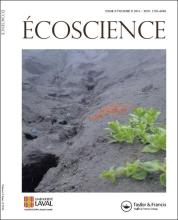Resource information
Conservationists have proposed that maintaining key elements of the original land-cover type in modified landscapes may mitigate the detrimental effects of land-cover change on residual species. We tested this hypothesis for aquatic insect communities in tank-forming bromeliads in forested and non-forested habitats in Costa Rica. Bromeliad tanks hold much of the standing water in this region and therefore provide an important resource for insects with aquatic larval stages. We quantified the relative importance of land-use type and the bromeliad-specific ââlocalââ environment on the insect community, and also the effect of land-use type on this local environment. Insect species responded to both land-use type and the local environment, with these variables explaining a total of 36%% of species densities. The local environment independently explained 19%% of insect densities, while land-use type explained 17%%, mainly through its modification of the local environment. Local environmental conditions were strongly correlated to land-use type (r² == 0.64), with non-forest habitat having a higher average temperature, a greater variation in temperature, and a lower density of bromeliads. Our results indicate that the land-use type in which bromeliads occur influences the relative densities of insects by altering the local environment of bromeliads. Therefore, maintaining bromeliads under land-use conversion will not necessarily maintain the bromeliad insect community of the original forested habitat.Nomenclature: Croat, 1978; Rzedowski, 1978.



